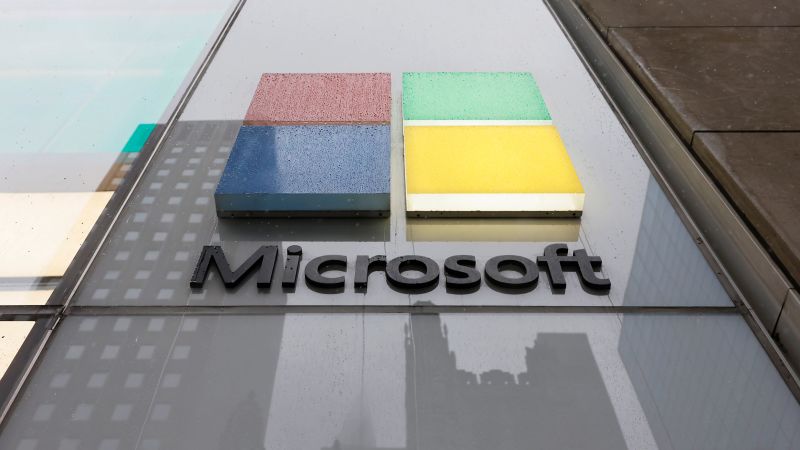MANHATTAN, NEW YORK, UNITED STATES – November 20, 2019: JPMorgan Chase headquarters in Manhattan. [+] (Photo courtesy of LightRocket/Erik McGregor via Getty Images)
Getty Images/LightRocket
[07/06/2021] [Updated] Update from JPMorgan JPMorgan stock (NYSE: JPM) has risen around 24% year to date, and it is currently selling at $157 per share, which is 4% below its fair value of $163, according to Trefis’ valuation estimate. On June 28, the bank reported that it had completed the Federal Reserve’s Comprehensive Capital Analysis and Review (“CCAR”) stress test process for 2021. The CCAR stress test is done every year to assess, regulate, and supervise significant banks and financial organizations. Due to the economic slump, the Fed imposed some restrictions on dividends and share buybacks by large banks last year. However, all of the banks participating in the annual stress test exercise 2021 were able to pass it. As a result, for the third quarter of 2021, JPMorgan anticipates to boost the quarterly common stock dividend to $1.00 per share (up from $0.90 per share now) (subject to approval by the Board of Directors). In December 2020, JPMorgan Chase launched a $30 billion share repurchase programme that will last indefinitely.
The full-year 2020 revenue of $119.5 billion was somewhat higher than the previous year’s number of $119.5 billion. This was attributed to increasing investment banking and sales & trading revenues in the corporate & investment bank segment, somewhat offset by decreased revenues in the consumer & community banking segment. The segment was hurt by a 10% drop in net interest revenue year over year, owing to a reduced interest rate environment and a fall in outstanding loans. The same trend persisted in the first quarter of FY2021, with the bank reporting a 46 percent year-over-year increase in corporate and investment bank revenues and a 6% reduction in community and consumer banking. In addition, the bank’s non-interest revenue from core banking operations improved in the first quarter, and we expect this trend to continue in the months ahead. However, as the economy improves, growth in the corporate and investment bank is projected to normalize in the coming quarters. Furthermore, low-interest rates are expected to remain below pre-Covid-19 levels for some time. Overall, JPMorgan’s revenue will be limited to $119.5 billion in FY2021. While revenues are predicted to stay flat in 2021, the bank’s profitability is expected to increase significantly due to a positive reduction in credit loss provisions. We predict the bank’s EPS to rise from $8.88 to $10.95 this year, resulting in a valuation of around $163 based on the P/E ratio of close to 15x.
[Updated on May 12, 2021] JPMorgan’s stock has a limited upward potential at $159 per share.
JPMorgan shares (NYSE: JPM), the largest bank in the United States by total assets, gained nearly 25%, rising from around $127 at the start of 2021 to around $159 today, surpassing the S&P500, which increased 11% during the same period.
This was due to three distinct factors: First, the $1.9 trillion stimulus check proposal was approved. Second, the United States has launched an aggressive Covid-19 vaccination campaign, with 46.2 percent of the population receiving at least one dose. Third, the Federal Reserve has opted to keep its key interest rate near zero for the foreseeable future.
Is this, however, the end of the story?
Despite recent advances, Trefis estimates JPMorgan’s value to be around $163 per share, which is slightly higher than the current market price, based on one important opportunity and one risk aspect.
ADDITIONAL INFORMATION FOR YOU
The opportunity we see is for JPMorgan Revenue to improve its trajectory in the next quarters. JPMorgan reported full-year 2020 revenues of $119.5 billion, up 4% from the previous year, owing to a 26% increase in the corporate & investment bank sector, slightly offset by a 7% y-o-y decline in the consumer & community banking business. The impact of increasing trading volumes and underwriting agreements, respectively, drove a 39 percent increase in sales & trading and a 25 percent increase in investment banking revenues in corporate & investment banking. In addition, the consumer & community banking division saw a 10% drop in net interest revenue due to the reduced interest rate environment and a reduction in outstanding loans, followed by a drop in card purchase volumes due to lower consumer spending levels. Notably, in 2020, the segment will account for around 43% of overall revenues, down from 48% in 2019.
The same trend continued in the first quarter of FY2021, with JPMorgan Chase reporting a 14 percent year-over-year increase in revenue to $32.3 billion. Growth in investment banking (mostly equity underwriting) and sales & trading operations drove a 46 percent increase in corporate & investment bank revenues. In addition, community and consumer banking revenues fell 6% y-o-y in the quarter, following the trend set by 2020. It was mostly owing to a 14% drop in NII, which was slightly offset by a 12% increase in non-interest income. The increase in average deposits, client investment assets, and card purchase volume contributed to the increase in non-interest revenue, which is expected to continue in the coming quarters. Notably, the bank’s Assets under Management (AuM) have been steadily increasing in recent quarters, reaching $2.8 trillion in Q1 – up 4% sequentially – helping its asset and wealth management sector. However, greater trading volumes and underwriting transaction volumes are driving growth in corporate and investment banking, which is projected to level out in the coming months. However, until then, the segment is likely to dominate the company’s quarterly performance. Furthermore, low borrowing rates are anticipated to persist for some time, putting downward pressure on NII. The resurgence in consumer demand and further expansion in AuM, on the other hand, will support JPM’s top line. JPMorgan Chase’s revenues are expected to stay at $119.5 billion in FY2021.
Due to the beneficial effect of decreased provision for credit losses, JPM’s net income margin is expected to expand from 22.9 percent to 27.3 percent in FY2021. In the first quarter, the bank released a $5.2 billion loan loss reserve, resulting in a net provision of -$4.2 billion. Overall, it is expected to produce EPS of $10.95 for the year, which, when combined with a P/E multiple of just over 15x, will result in a valuation of roughly $163.
Finally, what should the market be willing to pay for each dollar of JPMorgan earnings? To earn close to $10.95 a year from a bank, you’d need to put about $1095 in a savings account today, which is about 100 times the needed earnings. We’re talking about a P/E multiple of just over 14x at JPMorgan’s current share price of around $159. And we believe a figure of 15x is more appropriate.
Banking, on the other hand, is a dangerous business right now. Core banking is showing signs of slowing growth, with less than rosy expectations in the short term. What’s going on here?
Although the bank has lowered its loan loss provisions in recent quarters, indicating some improvement in its clients’ capacity to repay their loans, the ability to repay is directly connected to the health of the economy. If the economy worsens, the bank is expected to suffer huge loan defaults – JPMorgan has a $434 billion consumer and community banking loan portfolio and a $207 billion commercial banking loan portfolio ( as per Q1 FY2021 figures). Furthermore, the bank’s NII will most likely suffer as a result of the low interest rate environment. To summarize, we believe JPMorgan stock is undervalued and has little upside potential.
Do you believe Bitcoin has the potential to disrupt the banking industry? Looking for a way to profit from Bitcoin adoption without having to invest in the cryptocurrency? More information on our theme of Cryptocurrency Stocks can be found here.
Here you may find all of Trefis’ Featured Analyses and Trefis Data./n
/https://specials-images.forbesimg.com/imageserve/1183681903/0x0.jpg)




